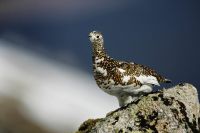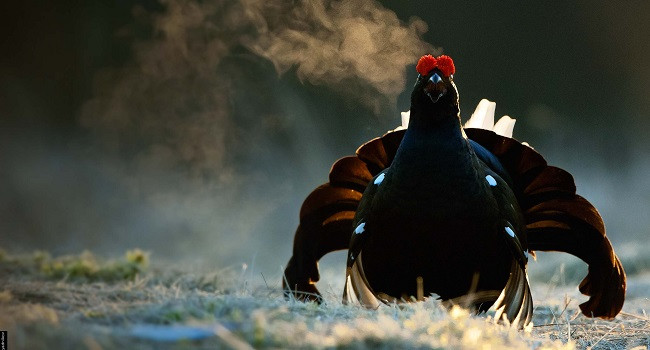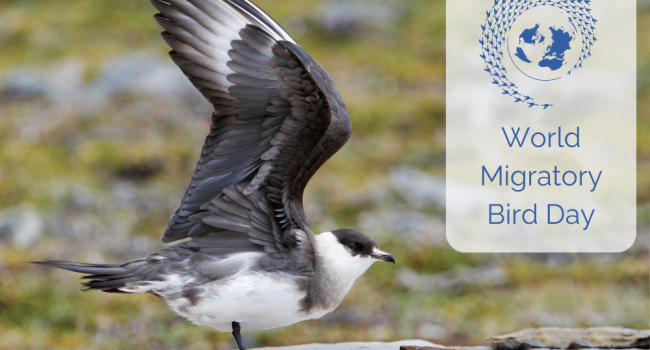Two thousand more citizen scientists help to conserve birds in Scotland
01 Jun 2011 | No. 2011-20
More than 2000 new volunteer bird surveyors signed up to take part in five long-term BTO-led bird surveys in Scotland during the Building Bird Monitoring in Scotland project - that’s just one of the successes featured in the project’s Final Report published today.
The three-year project was funded by Scottish Natural Heritage (SNH), the Gillman Trusts, the British Trust for Ornithology (BTO) and the Scottish Ornithologists’ Club (SOC). It explored the best ways to engage as many people as possible in the ‘citizen science’ of bird survey work in Scotland. The aim was to support and inspire potential new volunteers, as well as providing support to current BTO and SOC local voluntary representatives, empowering them to engage more volunteers themselves.
Building Bird Monitoring in Scotland activities included: three national weekend meetings to share best practice amongst regional volunteer coordinators; 19 one-day training events for almost 400 existing and potential volunteers; an annual bespoke newsletter for volunteer bird recorders; three new promotional leaflets; and the advertising of opportunities for volunteering through a range of media and in collaboration with a range of partner organisations.
The project sought to involve new groups of the public in bird recording across Scotland, particularly those already active in the uplands, such as hill-walkers, mountaineers and countryside managers like landowners and gamekeepers. All the participants were asked to provide feedback on the project activities and on what else they needed to motivate and support them in taking up or increasing their voluntary bird recording in future.
The training days alone resulted in 53 volunteers taking on 74 new long-term bird surveys, whilst during the course of the three years, more than 2000 new volunteers began taking part in five BTO-led key bird monitoring schemes across Scotland.
Andy Douse, SNH Senior Ornithological Adviser,"To plan bird conservation programmes, we need solid evidence from trained volunteers. For some parts of Scotland, such as remote upland areas, this can be a struggle. That's why the Building Bird Monitoring in Scotland project was developed and why it was so timely. It's great to see so many more volunteers getting involved and we are extremely grateful to them. It's also crucial that we continue to encourage and support them in the valuable contribution they make."
Mandy Cook, BTO Scotland Development Coordinator,“Building Bird Monitoring in Scotland showed that many people have the knowledge and the desire to help us carry out valuable bird monitoring work but frequently they lack belief in their own ability. One of the key project findings was that participants with some previous survey experience, who had built their confidence, were more than twice as likely to take on new surveys. Face-to-face contact and hands-on experiences are highly valuable and are the key to increasing bird recorders’ confidence to take part in our surveys. Many of the projectparticipants said that one-to-one mentoring to improve their birding and survey skills and increase their confidence was what they really needed to get involved in more monitoring work. As a result, the BTO and SOC are looking to set up a bespoke mentoring scheme in Scotland, with the aim of developing many more highly skilled citizen scientists”.
David Jardine, SOC President,“Building Bird Monitoring in Scotland played an important role in swelling volunteer numbers taking part in all the major long-term bird surveys and the Bird Atlas 2007-11 project. It benefitted greatly from the valuable support and deep experience contributed by the existing voluntary BTO regional co-ordinators and SOC local recorders and branches, who played such an active role in the project, and who worked harder than ever to recruit and motivate volunteers locally during the period of the project. All the project partner organisations are extremely grateful to them for all they continue to do.“
Chris Wernham , Head of the BTO in Scotland, “Having worked with BTO volunteer bird surveyors for 15 years now, I am still in awe of their deep skills and dedication. Building Bird Monitoring in Scotland was an ideal way of sharing the skills, experience and passion of long-term bird recorders to empower many more skilled citizen scientists. Birds may seem relatively well monitored in the UK but there are still huge gaps in our knowledge across Scotland, gaps that must be filled if well-informed policy decisions are to be made about how to manage Scotland to benefit both its biodiversity and its people. Highly skilled volunteers, such as those that carry out bird monitoring for BTO and SOC, can deliver the sort of high-quality information that is needed in a highly cost-effective way, whilst going about their daily activities in the countryside or indulging in healthy, active and fulfilling hobbies.”
“The BTO and SOC will continue to explore novel survey approaches and ways of involving new groups of volunteers, to help improve bird monitoring coverage in Scotland. SNH will be a key partner in this respect, as we seek to expand survey work to better answer policy-relevant questions now and in the future. Lessons learnt from this important project have allowed us to shape our ideas for engaging more volunteers to monitor birds and other wildlife groups in the future, ideas that can be shared with others for the good of Scotland’s biodiversity.”
Notes for Editors
- The BTO is the UK’s leading bird research organisation. Over thirty thousand birdwatchers contribute to the BTO’s surveys. They collect information that forms the basis of conservation action in the UK. The BTO maintains a staff of 100 at its offices in Norfolk and Stirling, who analyse and publicise the results of project work. The BTO’s investigations are funded by government, industry and conservation organisations.
- The Scottish Ornithologists’ Club plays a central role in Scottish birdwatching, bringing together amateur birdwatchers, keen birders and research ornithologists with the aims of documenting, studying and, not least, enjoying Scotland’s varied birdlife. The SOC is Scotland’s national bird club with 2500 members and 14 branches around the country. For more information see www.the-soc.org.uk
- The task of Scottish Natural Heritage is to secure the conservation and enhancement of Scotland’s unique and precarious natural heritage – the wildlife, the habitats and the landscapes which have evolved in Scotland through the long partnership between people and nature.
- Bird Atlas 2007-2011 is a partnership between the British Trust for Ornithology (BTO), the Scottish Ornithologists’ Club (SOC) and BirdWatch Ireland. Bird Atlas 2007-2011 will map the distribution and relative abundance of birds in Britain and Ireland during the breeding season and winter. Results produced by Bird Atlas 2007-2011 will form the basis of conservation priorities for coming decades.
Contact Information
Chris Wernham (Head of BTO Scotland)
Office: 01786 466560 or 466563
Mobile: 07765 458545
Email: chris.wernham [at] bto.org
Paul Stancliffe (BTO Press Officer)
Office: 01842 750050 (9am-5.30pm)
Mobile: 07585 440910 (anytime)
Email: press [at] bto.org







Share this page